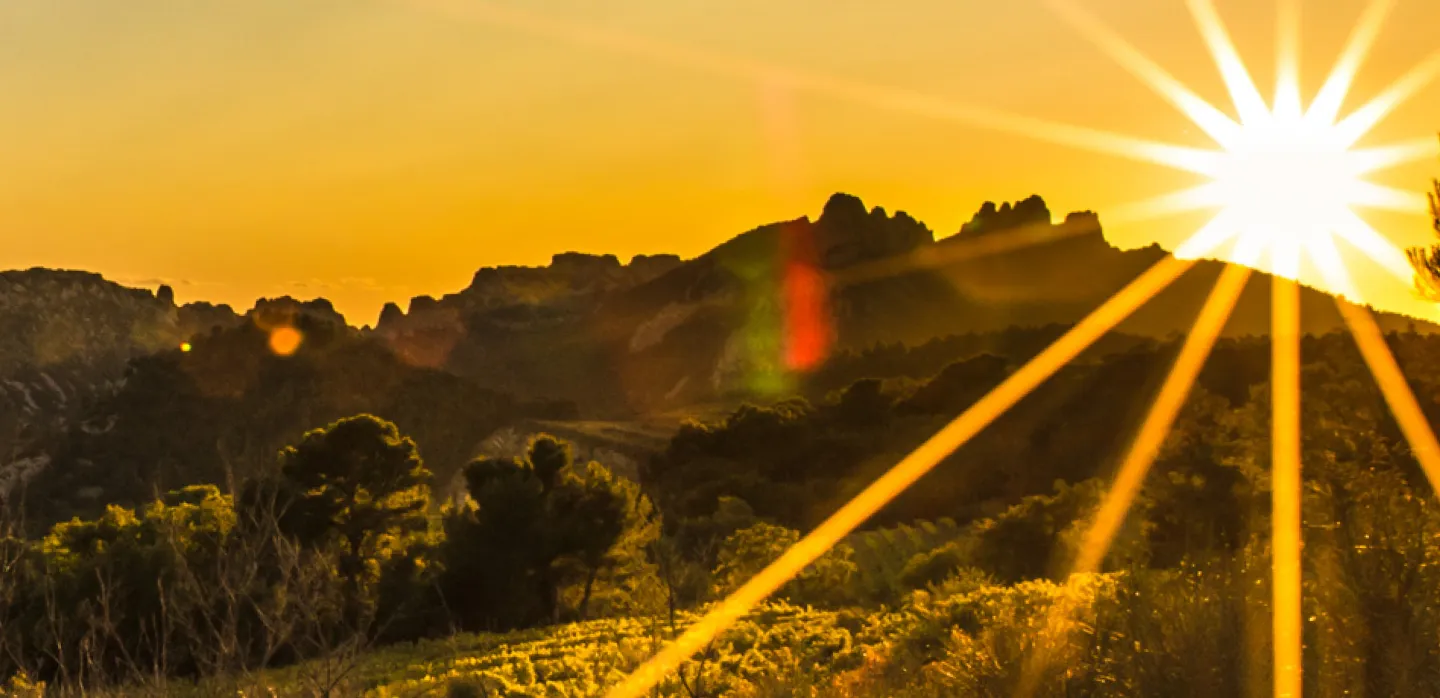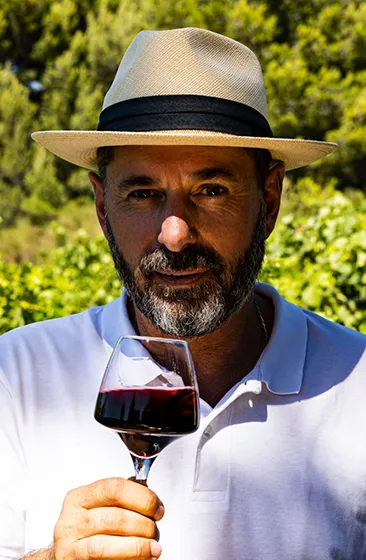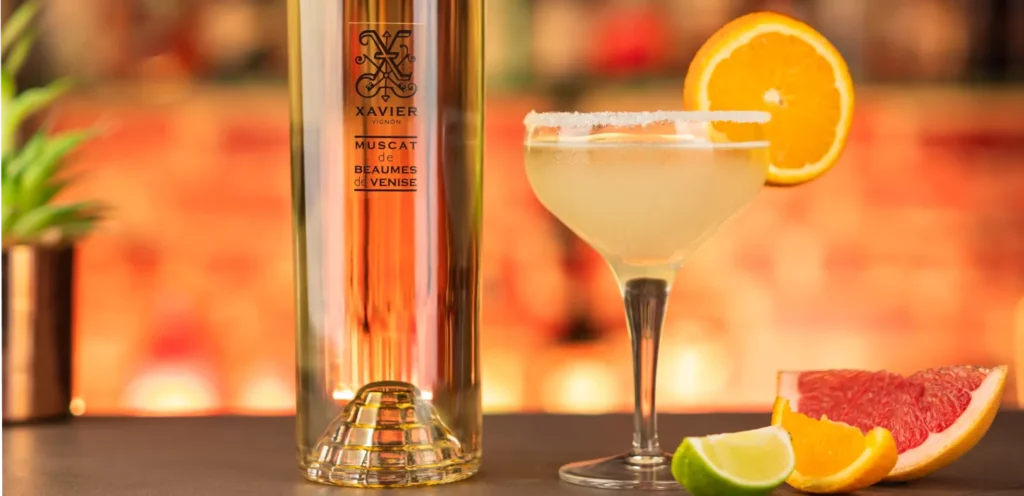Sure, there aren’t many things more enjoyable than a hot summer’s day spent basking in the sun. But for the vine, it’s a whole different story.
While the sun is essential for grapes to ripen properly, it can quickly turn into a formidable enemy when the heat becomes excessive. Rapid ripening, a sharp drop in acidity, berries that concentrate too fast… When the temperatures soar, heat becomes the winemaker’s number one concern.
So, what happens in the vineyard when it gets really hot? Which grape varieties hold up best? And most importantly, what does it change in your glass? Let me explain.
Grapes under pressure: how heat affects the vineyard
Here, in our beautiful Rhône Valley, heat can show up early in the season and last for months. The trouble is, it speeds up the vine’s natural cycle. Véraison (that turning point when grapes change color) comes earlier, and with it, sugars start to build up more quickly. One might think that this is beneficial, a shortcut, really, for richer, more concentrated, and alcoholic wines. But rapid ripening comes at a cost. While the grape ripens with sugar, natural acidity—especially malic acid—drops sharply. The result? Less freshness, rounder profiles, and sometimes a wine that feels just a bit off balance.
Heat also affects berry size. With less water in the soil, grapes stay small, their skins thicken, and tannins become more pronounced. That can lead to bolder and more structured reds. However, if you’re not careful during vinification, it can also mean less smoothness in the glass.
And when a heatwave drags on, the vine can shut down altogether to protect itself. It stops photosynthesis and slows everything down, which can stall ripening just when you need it most. Not exactly ideal if you’re aiming for a well-balanced vintage!
Not all grapes react the same
When you decide to plant a vineyard, you have to weigh in on every factor that the terroir includes: grape variety, soil type, altitude, wind exposure, harvest choices… and yes, heat is part of the equation too.
Faced with scorching temperatures, not every vine or grape variety responds in the same way. Grenache, for example, handles hydraulic stress relatively well and continues to mature at a steady rate. Mourvèdre can also hold its own, provided the soil retains some moisture. And Carignan, often planted at higher altitudes, keeps its natural liveliness even through scorching summers.
Syrah, on the other hand, needs a bit more attention. Too much heat and dryness, and it can start to lose its aromatic finesse, leaning into heavier, less refined territory. Viognier is another one to watch: while it’s wonderfully expressive on the nose, its acidity can plummet fast in the heat, affecting the balance of the wine in the long term.
However, beyond the choice of grape varieties, winemakers have to be mindful of the entire terroir and its capacity to withstand the heat.
Clay soils, which hold onto water, help the vines get through heat waves without too much stress. In contrast, the famous rounded stones of Châteauneuf-du-Pape soak up heat by day and release it at night, speeding up ripening and demanding real precision at harvest time.
Altitude is also a deciding factor. At 300 meters, the nights stay cooler, ripening slows down, and acidity is better preserved. Same goes for vineyard exposure: a north-facing or partially shaded plot won’t behave the same way as one in full southern sun.
And then there’s the Mistral. This dry, emblematic wind of the Rhône Valley helps keep disease at bay and naturally dries the grapes. But if it blows hard for days on end, it can dry out the soil even further. It’s both a blessing… and a bit of a challenge.
In the end, a good winemaker needs to know his terroir like the back of his hand, and keep all these factors in mind to craft the best possible wine, even when the weather turns extreme.
With harvest approaching, everything’s on the line
When the heat lingers into late summer, the days leading up to harvest become especially crucial. In these conditions, everything can speed up very quickly, sometimes too quickly.
Just a few days of intense sun can cause acidity to drop sharply, push the grapes toward over-ripeness, and upset the balance of the wine to come. On the other hand, a steady, dry mistral can actually work in our favor. By concentrating the berries and drying out the clusters, it helps preserve the fruit’s natural aromas while limiting the risk of disease.
But the weather doesn’t offer any guarantees. A late storm in early September can swell the grapes, dilute aromas, and, in some cases, trigger the onset of rot if conditions allow.
That’s why choosing the right moment to harvest is one of the most important decisions we make each year. Pick too early, and the grapes may lack ripeness. Wait too long, and you lose freshness.
At Xavier Vignon, we monitor each plot with precision. We harvest only when the grapes have reached their natural balance, a moment when sugars, acidity, aromatics and structure are all in perfect sync.
What does heat mean for the wine in the glass?
At Xavier Vignon, warm summers can produce wines that are rich, generous and full of character, as long as we keep their power in check. Our role is to preserve freshness, even when the grapes are very ripe. That means adapting the way we work in the cellar. We might use gentle pressings to avoid extracting too much tannin, shorten maceration to keep the wine light on its feet, or adjust how we blend different parcels to find the right balance.
The aim isn’t to hide the vintage, but to guide it. A hot summer can give us a great wine, provided we create the right conditions for it to shine.
Heat isn’t the enemy of good wine, especially not in the Rhône Valley
Warm weather isn’t the problem. It just means we have to be more alert and more hands-on, from the vineyard to the cellar. At Xavier Vignon, we never try to force the same style every year. Instead, we let each parcel guide us, adapting to what nature offers or throws our way. Every choice is about finding the right balance, capturing the spirit of the vintage, and staying true to the identity of the terroir.
Because the sun can be a brilliant partner. As long as it doesn’t overshadow what truly matters.



